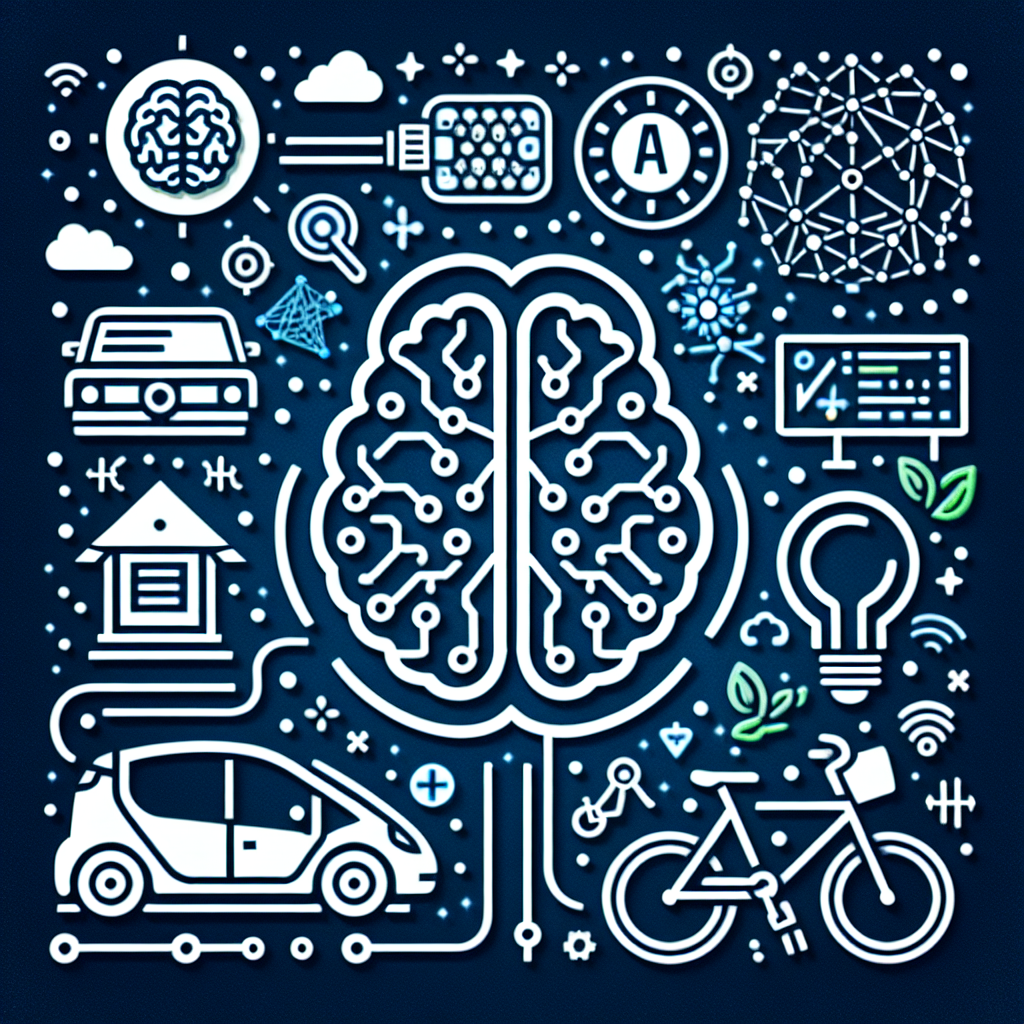The Role of AI in Promoting Eco-friendly Transportation
In recent years, there has been a growing emphasis on the importance of adopting eco-friendly transportation options to reduce carbon emissions and combat climate change. As technology continues to advance, artificial intelligence (AI) has emerged as a powerful tool in promoting sustainable transportation practices. From optimizing traffic flow to improving the efficiency of public transportation systems, AI is playing a key role in revolutionizing the way we move people and goods while minimizing our impact on the environment.
AI and Traffic Management
One of the key areas where AI is making a significant impact in promoting eco-friendly transportation is in traffic management. By using real-time data and predictive analytics, AI can help optimize traffic flow, reduce congestion, and minimize emissions from idling vehicles. For example, AI-powered traffic management systems can adjust traffic signals based on current traffic conditions, prioritize public transportation vehicles, and even suggest alternative routes to drivers to avoid congested areas.
In addition to improving traffic flow, AI can also help reduce the environmental impact of transportation by promoting the use of alternative modes of transportation such as biking, walking, and public transit. By analyzing data on transportation patterns and preferences, AI algorithms can identify opportunities to enhance existing public transportation services and develop new routes and schedules that better meet the needs of commuters. This can help encourage more people to use public transportation instead of driving, leading to a reduction in emissions and traffic congestion.
AI and Autonomous Vehicles
Another area where AI is playing a significant role in promoting eco-friendly transportation is in the development of autonomous vehicles. By using AI algorithms to analyze sensor data and make real-time decisions, autonomous vehicles can operate more efficiently and safely than human drivers. This can lead to a reduction in fuel consumption, emissions, and traffic accidents, making autonomous vehicles a key technology for promoting sustainable transportation.
In addition to improving the efficiency of individual vehicles, AI can also help optimize the overall transportation system by coordinating the movements of autonomous vehicles to minimize congestion and emissions. For example, AI algorithms can be used to create dynamic carpooling services that match passengers with nearby vehicles heading in the same direction, reducing the number of empty seats on the road and promoting more efficient use of transportation resources.
AI and Electric Vehicles
Electric vehicles (EVs) are another key technology for promoting eco-friendly transportation, as they produce zero emissions and can help reduce our reliance on fossil fuels. AI is playing a crucial role in advancing the adoption of EVs by improving the efficiency of charging infrastructure, optimizing battery performance, and developing new technologies to extend the range of electric vehicles.
By using AI algorithms to analyze data on driving patterns, traffic conditions, and weather forecasts, EVs can optimize their routes and charging schedules to minimize energy consumption and reduce charging times. This can help address one of the key limitations of EVs – range anxiety – by providing drivers with real-time recommendations on when and where to charge their vehicles to ensure they reach their destination without running out of battery power.
AI can also help improve the efficiency of charging infrastructure by analyzing data on electricity demand, grid capacity, and pricing to optimize the allocation of charging stations and reduce the cost of charging for EV owners. By using AI-powered smart charging systems, utilities can incentivize drivers to charge their vehicles during off-peak hours when electricity prices are lower, leading to a more sustainable and cost-effective transportation system.
FAQs
Q: How is AI being used to promote eco-friendly transportation?
A: AI is being used in a variety of ways to promote eco-friendly transportation, including optimizing traffic flow, improving public transportation services, developing autonomous vehicles, and advancing the adoption of electric vehicles. By using real-time data and predictive analytics, AI can help reduce emissions, congestion, and energy consumption in the transportation sector.
Q: What are some examples of AI-powered transportation technologies?
A: Some examples of AI-powered transportation technologies include traffic management systems that adjust traffic signals based on current conditions, dynamic carpooling services that match passengers with nearby vehicles, autonomous vehicles that operate more efficiently and safely than human drivers, and smart charging systems that optimize the allocation of charging stations for electric vehicles.
Q: How can AI help reduce emissions from transportation?
A: AI can help reduce emissions from transportation by promoting the use of alternative modes of transportation such as biking, walking, and public transit, optimizing traffic flow to minimize congestion and idling, coordinating the movements of autonomous vehicles to reduce fuel consumption, and improving the efficiency of electric vehicles through advanced battery management and charging technologies.
Q: What are some of the challenges and limitations of using AI in promoting eco-friendly transportation?
A: Some of the challenges and limitations of using AI in promoting eco-friendly transportation include the high cost of implementing AI-powered technologies, the need for robust data infrastructure and connectivity, concerns about data privacy and security, and the potential for AI algorithms to reinforce existing biases and inequalities in the transportation system. It is important to address these challenges and limitations through careful planning, stakeholder engagement, and regulatory oversight to ensure that AI is used responsibly and ethically in promoting sustainable transportation practices.

